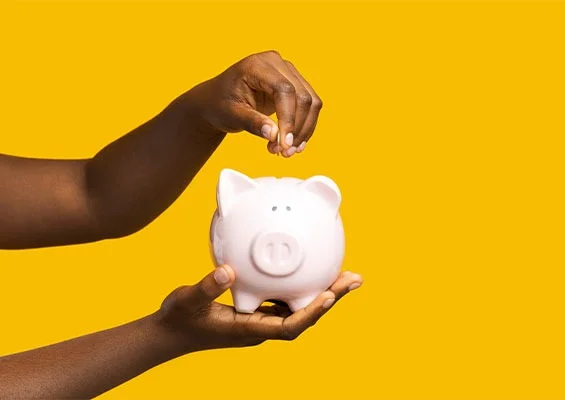
MONEY MANAGEMENT
Why You Should Have an Emergency Fund
Expect the Unexpected: Why You Need an Emergency Fund
There’s a saying that goes, “Life is what happens while you’re busy making other plans.” And sometimes what happens is an unexpected car repair, medical bill or another kind of emergency. You can’t avoid these calamities, but you can plan for them by building an emergency fund. We’ll look at how much you should save, the benefits of an emergency fund and the best places to keep your money safe.
What Is an Emergency Fund?
Let’s start with the basics: An emergency fund is cash that you keep separate from your other savings to help you deal with unexpected life events and emergencies.
Keep in mind that your emergency fund should be used only for true emergencies. Don’t use it as a vacation fund or as backup cash. If you want to save for a vacation, you can set up a separate account, so you won’t be tempted to tap into your emergency stash.
Unfortunately, emergencies happen to everyone, and they can be stressful and costly. Having money set aside can bring you peace of mind while also protecting your savings.
Common emergencies include:
- Unexpected car repairs
- Job loss
- Death in the family
- Medical or dental emergency
- Unexpected home repairs
- Unplanned travel expenses
- Legal fees
- Natural disasters
What Are the Benefits of Having an Emergency Fund?
The benefits of an emergency fund are many:
- Having ready cash to cover the unexpected lets you stay in control of your finances.
- Emergencies can take a physical and emotional toll. Being prepared can help ease stress.
- You can avoid taking on more debt, such as with a credit card or an emergency loan.
- Putting money aside encourages saving behavior and helps you avoid impulse purchases.
- Incorporating the fund into your monthly budget makes saving even easier.
- After you dip into your account to cover an emergency, you can rebuild so you’re never caught short on cash.
How Much Should I Have in My Emergency Fund?
It’s recommended that you have enough money to cover three to six months of living expenses. Living expenses include the “must-haves” like housing, auto, groceries, phone, basic utilities and other debt and not “want-to-haves” like dining out or entertainment. Depending on your lifestyle and needs, you may be able to save a little more to give yourself a bigger financial cushion.
If you’re closer to retirement, you might consider increasing your emergency fund to cover one to two years of living expenses, since you may not always have a steady paycheck.
While you should never keep all your savings at home, having a reserve of $1,000 in available cash is a good idea.
In the event of an emergency, such as a natural disaster, you may not be able to get to an ATM, banking systems could be down or you might not be able to use payment apps. Having cash can help you buy emergency supplies, gas, medicine, food or other necessities. Keep your cash in a fireproof and waterproof safe, which can protect your money and other valuables from fire, flood or other damage. Make sure the safe is bolted down so it can’t be taken by a burglar.
Where Should I Keep My Emergency Fund?
The best place to keep your emergency fund is at a financial institution separate from your other accounts. Here are two options to consider:
- Savings Account
A savings account is a safe option since all accounts are insured by the government up to $250,000 per depositor. You won’t earn much interest with a traditional savings account, but your money will be easy to access. You’ll earn a higher interest rate from a high-yield savings account.
- Money Market Account
A money market account earns higher interest than a traditional savings account and gives you access to funds through checks, debit cards and online transfers when you need emergency cash fast. Money market accounts are also insured by the federal government for up to $250,000 per depositor, so you can count on your money being safe.
Whatever option you choose, be sure that you’re also contributing to your retirement account and building wealth for the future.
How Should I Use My Emergency Fund?
You don’t want to tap your fund unless it’s a true emergency – and not an “emergency” like missing out on a sale!
If you have your fund in a savings or money market account, you should be able to withdraw cash through an ATM or transfer funds to your checking account.
If you find yourself in a situation that requires an immediate payment and you can’t access funds, use a credit card and then pay yourself back as soon as possible from your emergency fund. That way you’ll avoid incurring interest charges.
Emergencies come in all shapes and sizes, and it’s smart to be prepared for what life throws at you, whether it’s a repair bill you didn’t expect or a sudden drop in income due to a job loss. An emergency fund can do more than cover unexpected bills. It can also buy you peace of mind, which is well worth the money. S&T Bank can answer your questions and help you get started so you can protect your future and keep your savings safe.
Strategy Academy®
